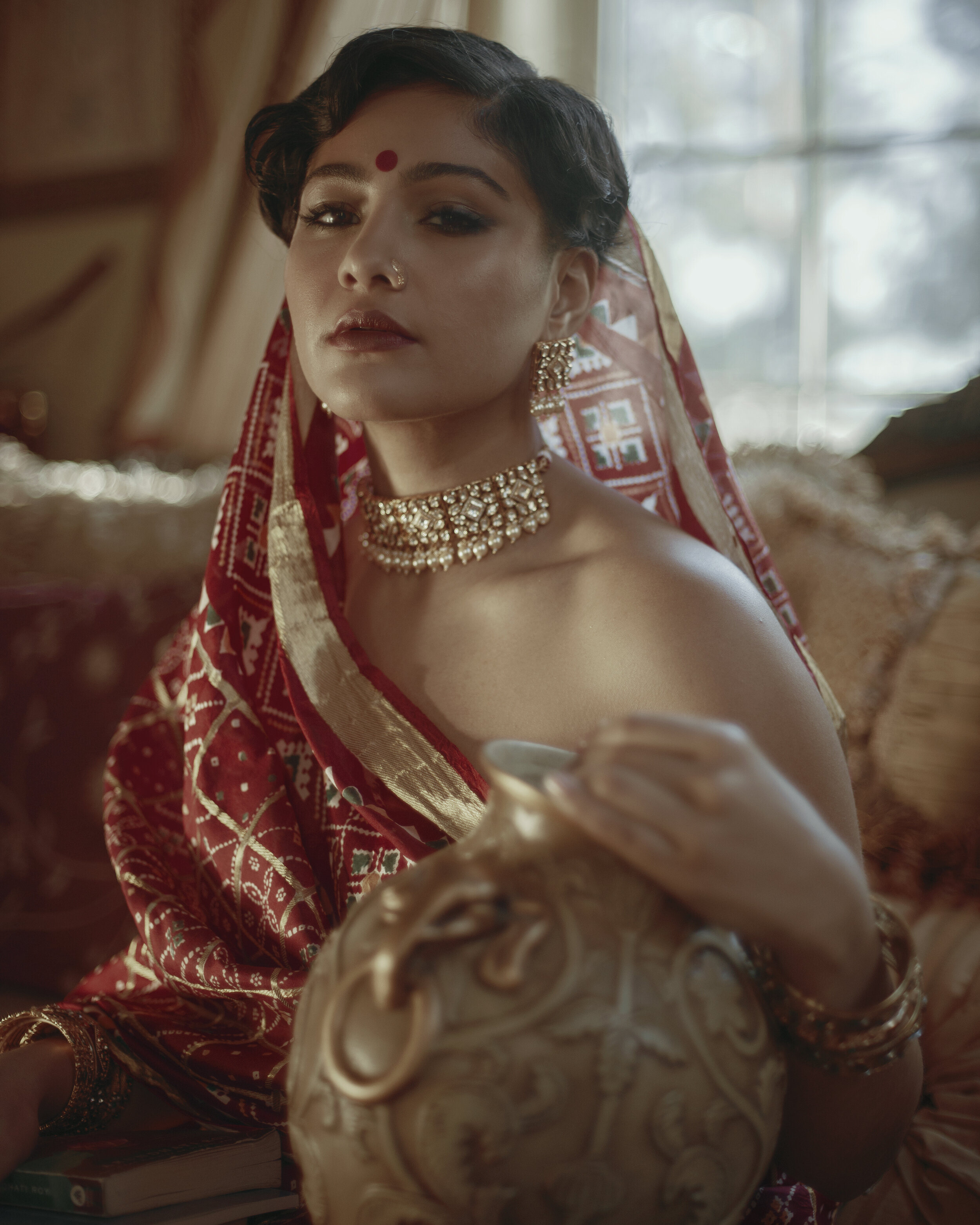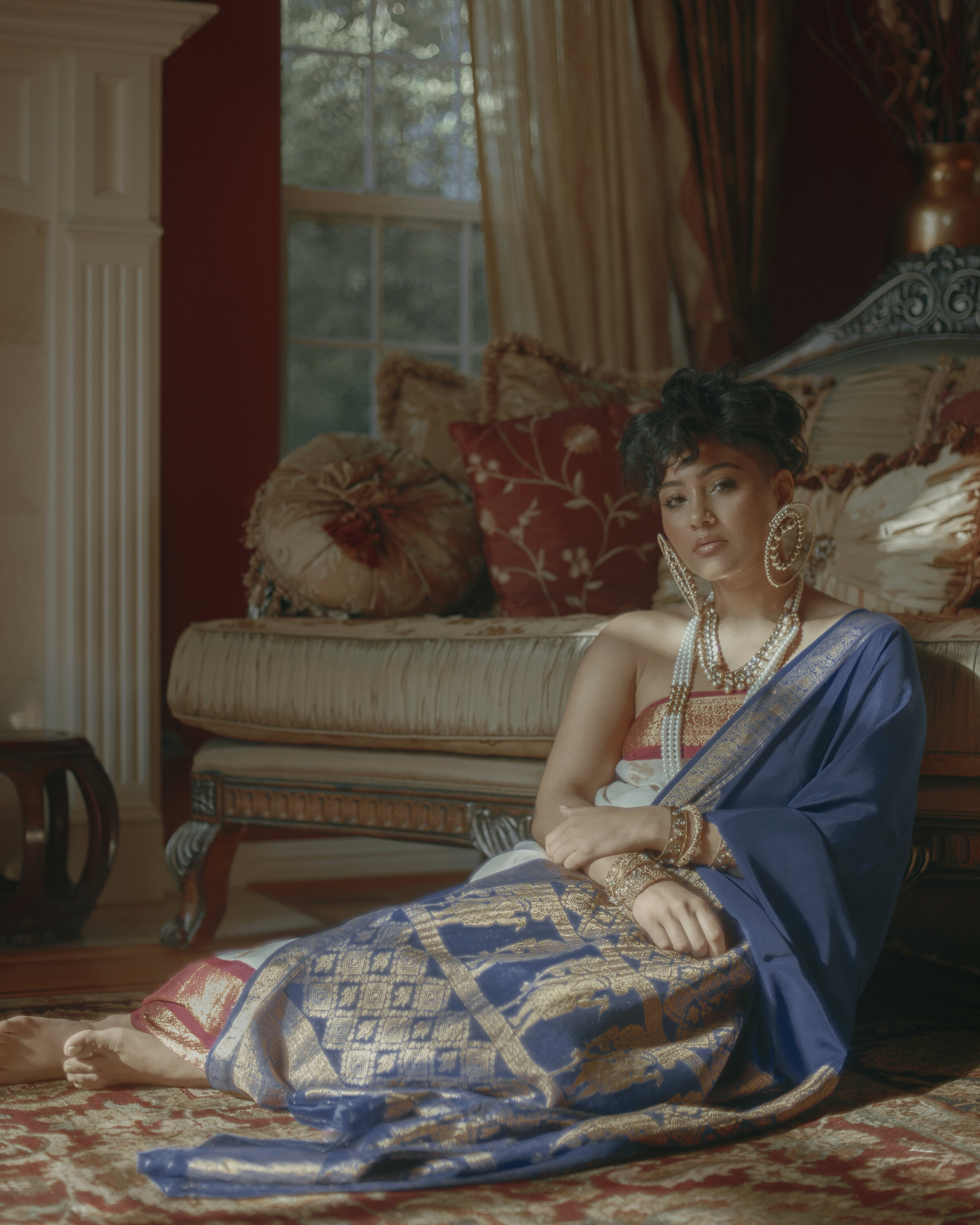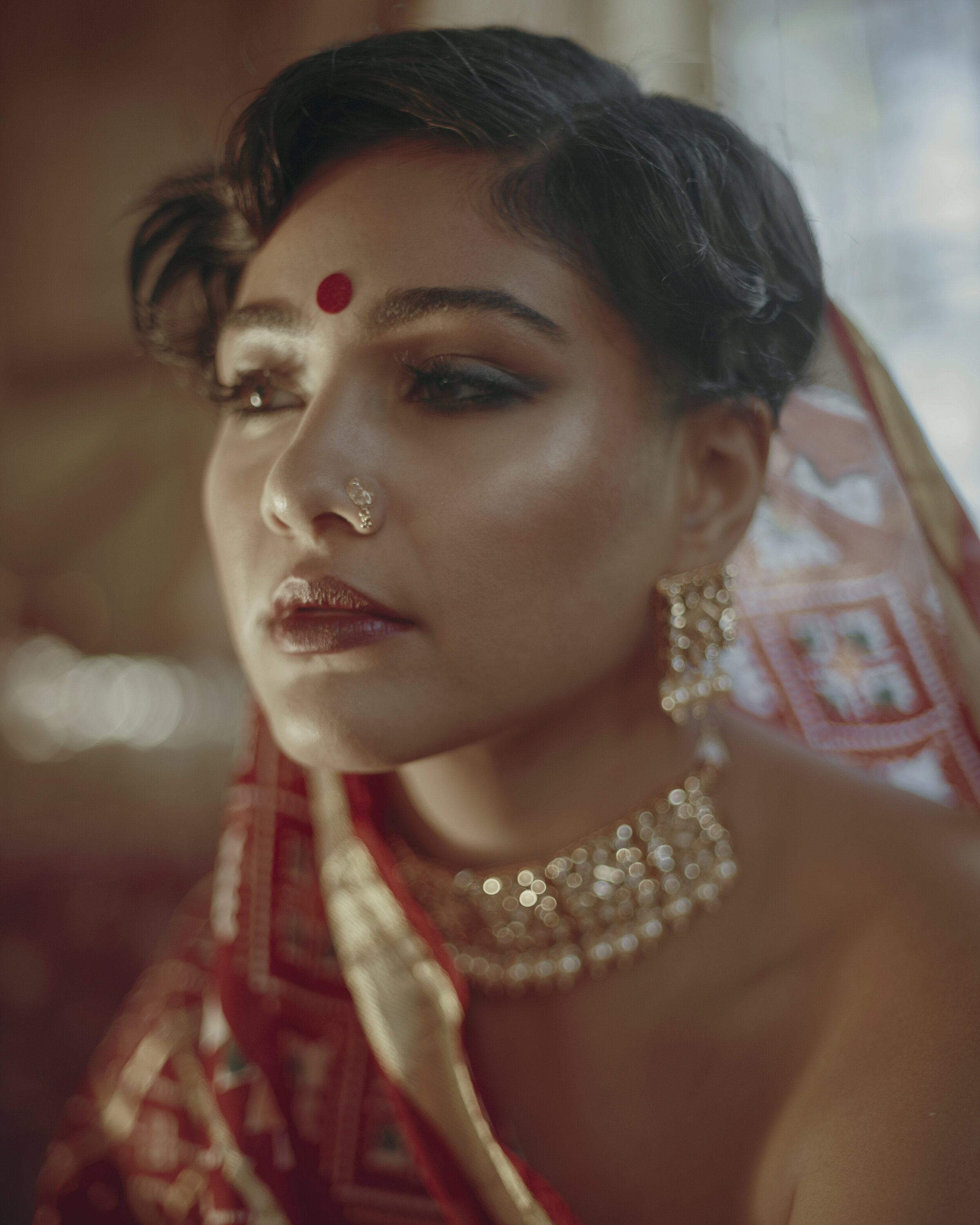Reimagining South Asian Portraiture
Image from Notes from Your Past, photographed by Simrah Farrukh
Interview By Ayat Al-Muhaisen
Reva Bhatt (@hybridhues) is a Creative Director and Stylist based in New York whose work focuses on disrupting monolithic narratives and decolonising the gaze through multi-disciplinary storytelling. Inspired by her hyphenated South Asian-American identity, she experiments with the way visual culture can educate, shape & express the world around us.
Her newest project, Notes from Your Past, aims to reimagine portraits that document contemporary South Asian femininity and specifically diaspora identity through the eyes of South Asian womxn for future generations. In collaboration with photographer Simrah Farrukh (@simrahfarrukh), the work blends photography and painting formats as an ode to archival South Asian portraiture. The artists hope this to be the first iteration of an ongoing series of portraits that lead towards deeper inquires into gender debates, the complex relationship between natives and colonialism, or our conceptualisation of the past.
As part of AZEEMA’s Diwali series, I had the chance to ask Reva and Simrah some questions about their work.
What is the project about and who is its intended audience?
Reva: Notes from Your Past is a project that aims to reimagine portraits that document contemporary South Asian femininity and specifically diaspora identity through the eyes of South Asian womxn for future generations. In collaboration with photographer Simrah Farrukh, we blended photography and painting formats as an ode to archival South Asian portraiture. We hope this is the first of an ongoing series of portraits that serve as socio-historical documents and as notes of interrogation leading towards deeper inquiries into gender debates, the complex relationship between natives and colonialism, or our conceptualisation of the past.
Simrah: We didn’t want this to become a part of the orientalist gaze, so the intended audience would be other South Asian womxn. It’s a continuous series, so with every new womxn we photograph, we hope for someone to see themselves in the art and know that they are honourable and valued.
Tell us a bit more about the history behind South Asian portraiture - who were the creators of these portraits, who did they feature, and who were they for?
R: In the early days, photography in South Asia was used as a colonial weapon for ethnographic study, to document and catalogue its subjects and their “exotic” cultures. I grew up seeing most photography documenting South Asian countries taken by white males and often depicting impoverished communities and our womxn through a colonial gaze. These images were by the west, for Western consumption and reiterated exotic tropes.
S: It was all through the white lens which led to exploitation. Along with what Reva stated about ethnographic studies, colonial photographers would often sell postcards of Eastern lands, architecture and/or people and profit off of them while the subjects received nothing. We see this issue today with white National Geographic photographers.
How do you feel South Asian women are usually represented? How does this project work to destabilise these representations?
R: There is definitely few and far representation of South Asian womxn in the west and even when we are represented, we are typically categorised and represented as a monolith. As a lighter skinned, upper caste Indian womxn who has grown up with Hindu practices, I am hyper aware that my specific identity narratives are often the ones dominating mainstream media and all the nuances, diversity and beauty of other equally important South Asian narratives are marginalised or often silenced. When I reached out to Simrah initially, I imagined this project to scale so that we would be able to capture portraits of diaspora identity across cultures. Then the pandemic hit and that became difficult with travel and photoshoots being much more tight. As things are starting to very slowly pick up again, I still very much would love to continue this project as a series of diaspora portraiture to really capture the diversity within South Asian identities.
S: For decades Bollywood has toxically trained our minds to think of the ideal South Asian women through who we saw on screens. Representation is always going to be relevant to some and irrelevant to others, that's how it works. So right now because there are only a few stories out there, it becomes an annoyance when it doesn’t 100% fit your story. We need more South Asian stories out there because there are hundreds of different narratives out there. We are not one narrative.
How do you actively work to decolonise the gaze through different art mediums? By extension, is there a specific medium that you feel is most productive in achieving this? Why is documentation important? Who does it serve?
R: For me, decolonising the gaze starts with self education, unlearning and learning, research and a lot of reading. Almost everything we’ve been taught in school is through a colonial and western gaze so I had to intentionally and consciously seek out art and literature from Black and Brown artists, writers, painters, photographers, etc to reorient my perspective on the world. I am a visual storyteller so the research and learnings always inform my art. Documenting art is critical because it immortalises the present climate for future generations to read, see, interpret and bring forward.
S: I majored in Studio Arts, so like Reva said about our education system being taught from a western gaze, I felt this greatly during my time in college. I had to take extra steps to research what I was learning in school because I knew there had to be more to what they were teaching us. 95% of the artists I learned about were white. This meant that while my white classmates were satisfied with what they were learning, I was doing research about Black, Indigenous & PoC artists.
In the back of my mind, whenever I’m creating work, I’m always thinking about future generations. I want future young South Asian artists to have art history that they can relate to and learn about in school. That’s why it’s so important to document and continue making impactful art.
In thinking about the formal mechanisms of the shoot - what do recreation and repetition mean/do here?
R: There is a specific tone in older South Asian portraits. A lot of the photographs are quite posed; whereas the paintings of South Asian womxn I’ve found seemed more relaxed, as if caught in the middle of a task. To me, it wasn’t about literally recreating any one specific image, but rather honouring past portraiture and our ancestors and documenting a little piece of today’s diaspora through similar mediums.
S: Reva wanted to recreate paintings from South Asian artists of the past. A lot of people have already recreated specific paintings, so with this we decided to recreate the essence of the paintings. From my perspective as a photographer, it was both formal and conceptual. My process involved studying the paintings and then figuring out how the artist used light and colour. During the shoot I used the light knowledge to create the mood of the women lounging and spending leisurely time to themselves. Conceptually, recreation of these paintings is like giving our ancestors an appreciation and honouring them. Either way, comparing the two mediums then and now tells you a lot about society’s current state.
How are intersectional identities explored and expressed through this piece?
R: As a woman, a woman of colour, a South Asian, a daughter of the diaspora, and an Indian woman with ancestral roots in Pakistan before partition, it was important for me to build a team behind the lens who also identify as South Asian women as we interrogate the colonial and male gaze. The fabrics and jewellery chosen are all familial and from different parts of India to further explore my own mixed ethnicities (Garhwali, Gujurati and Punjabi) and celebrate the rich textiles and craftsmanship that are the heart of my motherland. I also studied different drape styles in old South Asian portraiture and brought in a professional sari draper, Chhavi, to ensure we respectfully paid homage.
How are your own diasporic identities in conversation with the piece?
R: Although Simrah and I identify with different ethnic and religious backgrounds, we - like most South Asians - are grouped under the same umbrella in the diaspora. In America - we’re just Brown and there is little room for nuanced conversations. Individually, both of us are trying to disrupt that monolithic narrative through our art. It was so beautiful to work with Simrah on this project because the intention and vision didn’t need to be explained in depth - it was mutually understood. As Brown womxn in America, we share so many lived experiences. Yet we also understand, acknowledge and respect the inherent differences in our identities and thus experiences, as well.
S: I think it’s an interesting thing to think about how me and Reva come from similar, yet different ethnic and religious backgrounds and how we have the privilege of being able to work together. It all circles back to the intersectional identities that exist behind the scenes, and what that says about today’s society.



